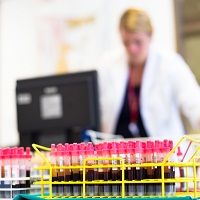Article
Progress Made Towards Early Detection of VAP
Author(s):
Technology may have a hand in promoting disease, but it's also the thing that helps prevent, stop, and treat it.

Technology is a double-edged sword. It has certainly helped solve many problems, but it has created some of its own as well. Michael Niederman, MD, from Winthrop Pulmonary Associates PC in New York, detailed the new technologies for ventilator-associated pneumonia (VAP) — which “may be available relatively soon” – at the CHEST 2015 meeting in Montréal, Canada.
“Adoption of new technology comes slowly,” Niederman began his presentation. But as of recently, a lot of research has been focused on detecting the presence of VAP and venous air embolism (VAE) — two dangerous pulmonary diseases.
Surveillance itself impacts the frequency of VAP. One analysis looked at 43,351 patients over a 10-year span. They had all been in the intensive care unit (ICU) for two days or more, and VAP rates fell with continuous surveillance.
Although that’s reassuring news, what kind of technology is out there to determine VAP in cases where prevention didn’t work?
The electronic nose is an early alert system that can “smell” infections in the air. A study published in Intensive Care Medicine tried the technology in the headspace of 45 patients. The device accurately determined that 14 patients had VAP, 14 had colonized, and 17 had neither.
Neutrophil autoflurescence is another strategy being studied to effectively diagnose VAP. “They did microscopy of cytospoin to measure autoflurescence,” Neiderman explained, and the researchers claimed that they could detect the illness in under an hour. “Those with and without pneumonia were very clear,” Neiderman said about the potential method.
Another technique brought up in the presentation to diagnose VAP was the rapid automated microscopy, mini bronchoalveolar lavage (mini-BAL). Earlier this year, a team used 33 patients who were mechanically ventilated (MV) and gathered 73 paired samples to test the technology. After five hours, it found all seven cases of VAP and detected 64 out of 66 negative cultures. While the strategy doesn’t say if a person has pneumonia or not, it’s 100% sensitive and 97% specific for bacteria in clinical cultures so that it can reed flag patients.
Real-time polymerase chain reaction (PCR) is a laboratory technique for pathogen detection. “There was a very interesting study earlier in CHEST this year,” Niederman spoke on the meeting’s official journal. It used multiplex PCR to determine nosocomial pneumonia, or hospital-acquired pneumonia, in 56 patients. The diagnostic tool had “excellent” ability at picking up on the illness.
VAP Chip is another promising way to detect resistant genes and be used directly on clinical samples. In an analysis of 292 bacterial isolates, the device was able to detect between 20 to 100 genome types. Both of these are important because they can diagnose the etiology of nosocomial pneumonia without a patient having to undergo a bronchoscopy.
“The negative result of a test is also extremely valuable,” Niederman said. High sensitivity testing that show negative results can help narrow therapy. So while there are tools to help diagnose disease, other technologies are what start some of them in the first place.
Niederman concluded his presentation by quoting Christian Lous Lange: “Technology is a useful servant but a dangerous master.”



